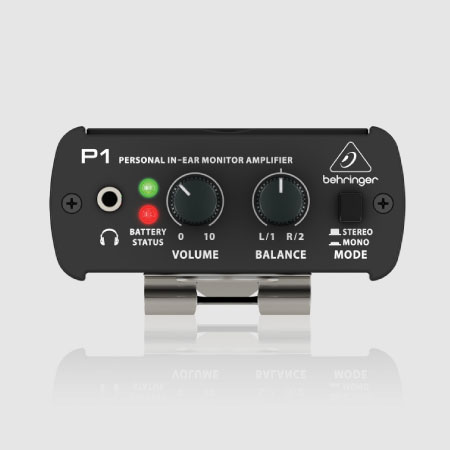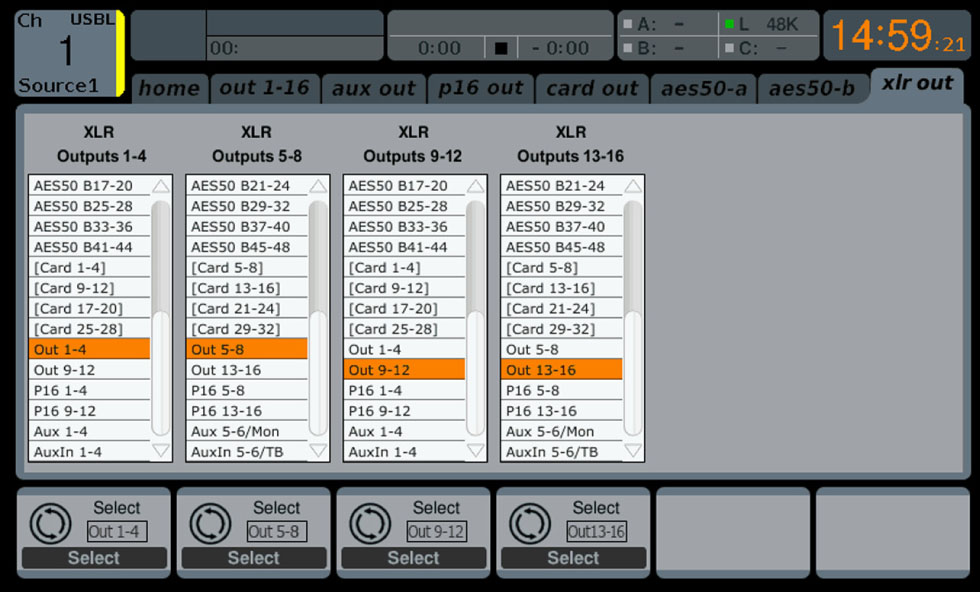

We can use the Aux In Remap to access some of the Local I/O, but that would remove the option to pull from the 1/4 Inch TRS Inputs. If we were to plug a microphone into the Local XLR Input 1 on the back of the X32, we would be unable to access that microphone unless we change one of the ‘Blocks’ back to Local 1-8.

We now have the X32 pulling all audio inputs from the digital snake. We are going to connect a Behringer S32 digital snake into the AES50A port, and swap all Inputs 1-32 to pull from the AES50 A Blocks. If you change Input 1-8 to be pulled from AES50 A1-8, you will not be able to access any of the Local 1-8 unless you take up a ‘Block’ from Inputs 9-16, Inputs 17-24, Inputs 25-32, or the Aux In Remap to source from Local 1-8. We can make the statement that if you plug a microphone into XLR Input 2 on the X32, it will arrive on Channel 2 on the X32. The default routing options of the channels will also pull from the corresponding number, so Channel 1 will pull from Input 1. As you can see in this screenshot of the routing options, they are in blocks of 8.īy default, Input 1-8 is sourced from Local 1-8 so if you plug a microphone into XLR Input 1 on the X32, it will arrive in the Input 1. One limitation of the Behringer X32 line and Midas M32 line is the routing blocks which is labeled ‘ Channel Processing Block Patch‘. However, we do still have the ability to adjust 4 bands of EQ. The return has no ability to adjust polarity, gate, or dynamics. These channels can only be sourced from the effects rack. The FX Return channels are the returns out of the Effect Racks 1-4. The Aux channels do not have Low Cut, Input Delay, Insert Points, Gate Section, and the Dynamics Section. The auxiliary channels of the Behringer X32 can pull audio from any of the inputs just like Channels 1-32, however, we have limited channels parameters which we can now adjust.
Behringer x32 firmware how to#
After that, I will go through how to get the ‘Inputs’ from either the Local X32 or a remote I/O on stage over a digital snake. Then I will talk about how the ‘Channels’ get the audio from the ‘Inputs’. I first want to talk about the specific processing which can be utilized in the console inside of the ‘Channels’. That is broken into 32 channels of XLR and 6 channels of Aux. InputsĪll of the X32 family has the ability to adjust 38 channels of inputs. So today, I am going to dive completely into ALL of the input options that you can use with the Behringer X32. Helpful features enhance the X32 console making it easier to manage lots of wireless microphones – assisting you through tech week when there are only a few rehearsals to get the mix right.I’m often asked what input options we have with the Behringer X32. X32TC allows you to focus on the show: the script, characters, and musical numbers are important, not esoteric console programming issues. inability to recall DCA labels without DCA fader levels, inability to recall channel delay without input trim, and inability to recall channel pan without channel fader level.

The X32 is a powerful console however its inbuilt scene management has significant deficiencies for theatre shows, e.g. without having to load anything into the console's scene management. X32TC then connects to your console, runs cues, monitors channels, accepts live edits.

Behringer x32 firmware Offline#
X32 Theatre Control allows rapid offline programming of a show: you can program cues using a laptop and mark up the script at the same time, instead of dragging out a console (or battling with a complicated offline editor!).


 0 kommentar(er)
0 kommentar(er)
